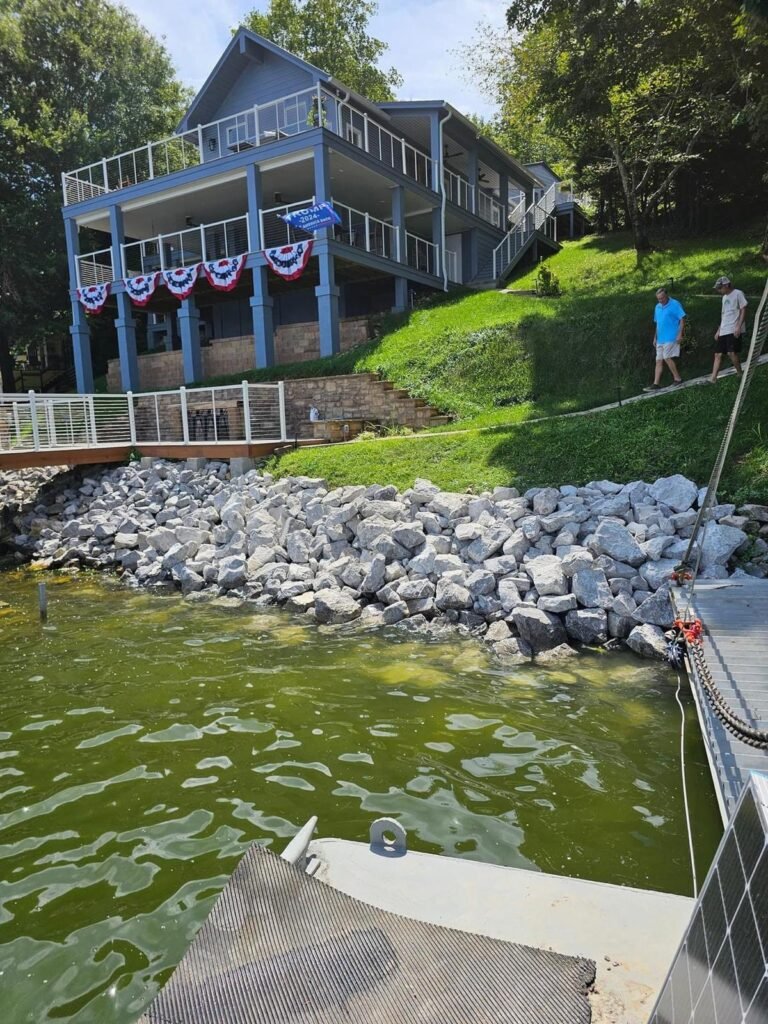
Rip rap is a common method of shoreline stabilization used along the banks of rivers, lakes and other bodies of water. It consists of large rocks and broken concrete pieces placed along the shoreline to absorb the force of incoming waves and protect the bank from erosion. Rip rap is a cost-effective way to stabilize shorelines and protect property from damage caused by water erosion.
Rip rap works by dissipating wave energy and slowing down the flow of water along the shore. The large rocks and stones form an armor layer that resists the scouring action of flowing or wave-driven water. As waves hit the rip rap, they lose energy and break apart, reducing their ability to carry away soil particles from the shoreline. The spaces between the rocks also allow water to flow through, preventing buildup of excess pressure behind the barrier.
Many homeowners and communities along the Tennessee River and its tributaries, including in Lenoir City, have installed rip rap along their properties to protect the shore from erosion. The material used is usually large limestone rocks quarried from local sources. The size and thickness of the rip rap depends on the energy of the waves it needs to absorb. The rocks are carefully placed along the bank at a slope that allows them to interlock and form a stable barrier.
While rip rap is an effective and inexpensive option for stabilizing shorelines, it does have some drawbacks. It can be an eyesore for waterfront properties and may impact water access. The rocks also need to be periodically inspected and rearranged to ensure the barrier remains intact. Still, for many homeowners in Lenoir City and the surrounding area, rip rap remains a go-to solution for protecting their properties from the erosive forces of the water.